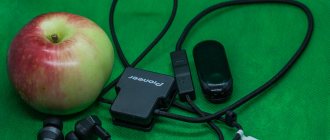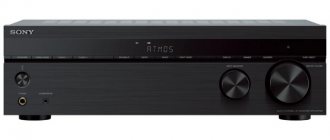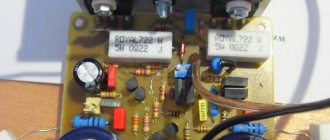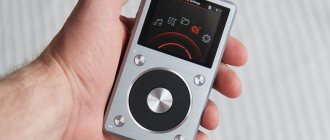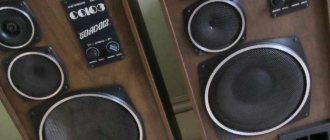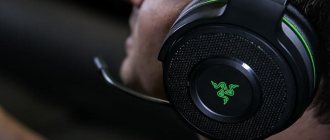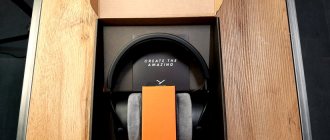Articles
Pioneer deh car radios
The pioneer deh line of car radios has always been reliable and very popular. The pioneer deh 9450 ub (or 5700 mp) car radio is a stylish model from this world famous manufacturer. The pioneer deh p7000 ub car radios, as well as others, deserve a separate discussion. Most of these samples of the deh line will be described in detail in our article, including the example of the deh 9450 ub.
First steps
The history of the multinational corporation Pioneer is closely connected with the island of Honshu - more precisely, with the city of Kobe, located on this island. It was there that Nozomu Matsumoto, the son of a Christian missionary, was born in 1905.
From a very early age, Nozomu was a committed Christian, as well as a very enthusiastic person and a great enthusiast in love with music and technology. Later, he became interested in electronic devices and saw in them a tool that could help him and his colleagues in missionary work.
Nozomu Matsumoto
In 1936, Nozomu became the founder of the Fukuin Shokai Denki Seisakusho company in Osaka, and a year later he created his first electrodynamic loudspeaker, the A-8, which he named Pioneer, i.e. "First".
In 1938, Matsumoto moved to Tokyo to launch his new startup under the same name. His activities were related to the repair and tuning of speaker systems and radios, as well as the release of his own line of Pioneer loudspeakers.
The radio repair shop that lived in the garage soon grew into a small company. The sons of the Japanese designer Seiya and Kanya Matsumoto later successfully continued their father’s work, and Seiya even headed the Pioneer company in 1982.
“Nozomu Matsumoto, the founder of the company, came to the States in 1935,” says renowned speaker designer Andrew Jones, who has worked with Infinity, Pioneer, TAD and ELAC brands. “It was here that he became interested in hi-fi and, realizing that nothing like this was happening in Japan, he returned home to develop his first speaker.
A-8
For 1937 this was a really cool driver with a paper cone and aluminum dome dust cap. The dome cap was mechanically separated from the cone and was intended to transmit high frequencies, i.e. the entire design was an almost concentric (coaxial) driver.
This full-range driver became the centerpiece of Matsumoto's first product, the A-8 dynamic loudspeaker, which was a well-thought-out design, especially since it was the first unit Pioneer released."
Nozomu Matsumoto started producing speaker systems because, being a deeply religious person, he wanted to share with other people the positive emotions and excitement he felt when listening to hi-fi speakers manufactured abroad.
“Pioneer's original mission was to share the listening experience with more people,” said Naoto Takashima, CEO of Tohoku Pioneer (the company's flagship plant and Pioneer's innovation center).
Difference between Pioneer car radios
When choosing the right radio model, the car enthusiast should be guided by the following criteria:
- how much time does he spend in the car per day?
- attitude to sound quality;
- financial opportunities.
Based on this, you should make a purchase. Car gadgets, in turn, differ in these indicators.
Size
If the driver spends most of his time behind the wheel, loves music, video clips and can afford to spend some money on purchasing good products, then he should buy the Pioneer 2 DIN product. This is a large gadget capable of broadcasting audio and video files. It acts as a multimedia complex. Also on the display you can transmit a recording of events captured by the rear camera.
The 1 DIN device is a standard radio tape recorder, half the size, and has less functionality.
Number of channels
Each Pioneer radio is designed for a certain number of channels. According to the state, the car has two speakers in front on the doors and two in the back. For those who like “hot things,” the company can offer a larger number of speakers and a subwoofer. To do this, you will need a device with an additional amplifier and ports.
Output power
The sound volume depends on this parameter. The standard version is 50 W per speaker. For car enthusiasts who want to turn their car into a mobile audio center, options are possible.
Radio screen
It can be full color, monochrome or two color. His choice depends on the price and taste of the car enthusiast. The remaining parameters can be configured using the internal capabilities of the product itself. This is the color of the backlight, the amount of information displayed, sound settings using an equalizer, etc.
Let's start our review with a story about a more conservative version of the Pioneer car radios.
Be the first in everything!
By 1946, the first Pioneer trademark was finalized, combining the Greek letter “omega” (a symbol of electrical resistance) and a tuning fork.
In 1953, the PE-8 Hi-Fi speaker appeared in the model range of Fukuin Denki, which by that time had acquired the status of a corporation, began production of wooden cases for speaker systems, and seven years later the first headphones were developed - a closed full-size model SE-1 , which eventually became the first stereo phones released in Japan.
PE-8
In 1954, the corporation already had five factories in its arsenal, and in 1955 the first vinyl player PLA-1, tube integrated amplifier HF-10A were released, and production of televisions began.
PLA-1
HF-10A
The following year, Pioneer pleased the world with tube mono amplifiers with a built-in FM tuner FM-P300 and FM-R301 - distant relatives of modern AV receivers.
FM-R301
At the same time, two-way audiophile speakers CS-283, CS-282, CS280 and tube stereo integrated circuit SM-R150 Stereo Master appeared.
CS-283
In 1961, the corporation changed its name to Pioneer Electronic Corporation and a year later introduced the world's first separate stereo system, the PSC-5A, confirming its status as an innovator in hi-fi electronics.
SM-R150 Stereo Master
In fact, it was a music center with detachable speakers, which looked quite unusual among the monolithic “stereo bedside tables” that were dominant at that time. The model was very popular and set a new trend in the Hi-Fi industry.
PSC-5A
In 1963, the company developed the TC-501 transistor reel-to-reel tape recorder, and in the USA, under the Pioneer brand, the RPS-501 four-track car radio was released.
TC-501
The corporation began supplying its equipment to all sorts of major events and important institutions such as the Imperial Theater in Tokyo, and in 1964, sets of Pioneer speakers and amplifiers were used at the National Olympic Stadium in Tokyo during the XVIII Summer Olympic Games.
RPS-501
In 1965, the transistor era began, the first all-transistor integrated amplifier SMT-804 was released, and the following year the transistor stereo receiver SX-100TA was released.
SMT-804
Pioneer's innovative products were a great success, which contributed to the expansion of the corporation, so that by 1966, Pioneer was able to spread its network of sales companies in the United States and Europe.
SX-100TA
In 1967, a stereo system using microcircuits instead of transistors was introduced, as well as the innovative IS-80 and IS-100 stereo systems with amplifiers built into the speakers. At this time, Pioneer continues to develop the car audio segment, producing speakers and car radios, including options with 8-track cartridges.
IS-80
In 1971, the corporation signed an agreement with Dolby Laboratories to use its noise reduction technology in its recording equipment.
T-3300
In the same year, quadraphonic audio systems and the first T-3300 deck using Compact Cassettes were implemented. Later, the SE-505 monitoring/recording control headphones, the Monitor 10 professional stereo phones, and the SEW-5 wireless radio headphones with a stereo transmitter were released.
SE-505
In 1973, the company's lineup included a 3-head reel-to-reel tape recorder RT-1020L with an amplification circuit based on low-noise silicon transistors.
RT-1020L
In 1977, the company pleased the adherents of high-end equipment by releasing the Exclusive Model 2301 reference-level speaker system in a horn design, assembled in a rigid case made of high-quality plywood.
Exclusive Model 2301
A year later, one of the most powerful radio receivers of that time appeared on store shelves - the Pioneer SX-1980, which produced 270 W at 8 Ohms and weighed 35 kg.
SX-1980
The LD Laser Revolution and the Golden Age of Hi-Fi Audio
Pioneer introduced the first interactive cable television systems in 1977, followed by professional LD players and the TVM-201 color screen television the following year.
VP-1000
In 1980, in the United States, the company showed its first consumer player, the VP-1000, with LD technology (LaserDisc is the first commercial optical storage medium with laser recording/reading technology), which can be called the grandfather of modern DVD and Blu-ray players.
The device was a version of the professional PR-7820 DiscoVision model adapted for ordinary users, and already in 1984, the Pioneer lineup was supplemented with an LD player capable of reading CDs.
Seiya Matsumoto
In 1982, Seiya Matsumoto became president of the corporation. Soon the company's slogan also changed, which now read: “Future of Sound and Vision.” In 1984, the world's first CD player for cars was introduced at CES Chicago, and in 1986, a separate Pioneer-curated Carrozzeria brand for car audio was formed in Japan.
Two years later, the company developed the world's first car CD receiver, the DEH-66. In the 80s, Pioneer made life much easier for many motorists by coming up with an original solution to combat thieves - a removable front panel of the car radio.
DEH-66
In 1985, Pioneer's first 40-inch rear-projection displays were released.
As for home audio, in the 80s, the Pioneer line was dominated by stereo systems with separate stationary Hi-Fi components (cassette decks, amplifiers, tuners, equalizers, LP players, etc.), which were installed in specialized rack racks.
S-X6
3-way speaker systems with large woofers were very popular - for example, the S-X6 model with a 220 mm bass driver with a carbon graphite cone, a 52 mm midrange driver and a ribbon tweeter.
Exclusive C5
It was in the 80s that the Exclusive C5 preamplifier appeared with a “dual mono” circuit topology, which became part of the iconic Exclusive line of Hi-Fi components.
P-D90
In 1984, the first generation Pioneer P-D90 CD player was released, which was equipped with an output signal indicator, and the next year the world's first CD changer, the PD-M6, with a “magazine” of six CDs, was released. In 1987, the company sold the first DAT tape recorders in the consumer electronics segment.
PD-M6
Pioneer deh 9450 ub and others
Car radio pioneer 9500 ub
A distinctive feature of this model is the excellent operation of the rewind levers, which replace standard buttons. In addition, the hallmark of this manufacturer’s model is the excellent performance of the rotary encoder, which is made with a rubber gasket.
Note. But still, the most important advantage of the model over the others is the purest sound, which seems collected and dense, although with some “dirtiness” in the upper bass, according to experts.
deh p5700 mp
Almost the same can be said about the pioneer deh p5700 mp or 3900 mp car radio model. On the other hand, they are distinguished by:
- User-friendly interface.
- A tall display capable of displaying as many as three lines of information.
- Convenient front panel, which ergonomically protrudes forward when you need to insert or remove a CD.
- Excellent design that did not cause any complaints.
- Superb sound quality.
Note. The disadvantage of all car radios in the deh line can be considered a slight distortion of color rendition if you look at the screen at an angle.
The pioneer deh p7000 ub car radio also features excellent sound. A test frequency response of the signal was carried out, which was passed through the audio path of the device. The results turned out to be excellent, almost standard.
Pioneer 80 prs
Test results:
- Frequency drops are observed, but they are not special.
- Good bass, giving the sound volume.
- The snare drum sounds dynamic due to the low mid-range component.
- The entire midrange is quite rich, giving a sense of presence and intimacy.
- Some weakness of the upper frequencies, which spoiled the entire picture that was previously established without a gap. As a result of this shortcoming, the sound becomes a little “blurred”.
Ergonomics of car radios pioneer deh
Pioneer 1500 ub
The standard size of the deh 9450ub radio is 1 din, which in millimeters is expressed as 178x50. The front panel of car radios of the entire line is made in a strict classic design. The deh 9450 controls are complemented by silver illuminated elements.
The process of removing deh series car radios is also noteworthy:
- As mentioned above, the front panel conveniently moves forward thanks to a special mechanism.
- All you have to do is press a button.
- After this, the panel can be removed by pulling it towards you and slightly to the side.
Pioneer 4000 ub
- The platform on which the pioneer car radio was placed automatically returns to its place.
Note. On most deh models, the front panel does not have a USB port and an AUX-IN input. They are moved to the rear panel of the car radio. In addition, the kit includes a long USB cable that allows you to extend the port into the car interior.
Pioneer 5450 SD
Advantages of the ergonomics of the front side of the deh 9450ub car radio and others:
- Almost all important controls are ergonomically distributed on the front side.
- The main part of the elements is brightly illuminated, which is a big advantage in the dark.
- There are many options for connecting the backlights (you can select different color shades through the settings menu).
- The presence of ergonomic levers instead of archaic rewind buttons.
Pioneer p5950ib
But the movement of the buttons on the Pioneer models of this series is a little harsh. This is especially noticeable on the deh 9450ub. But it is convenient to adjust the volume, because the encoder rotates quite gently, equipped with a rubber gasket for comfort.
Note. Not all radios in this series can boast of this type of encoder, but only the most expensive ones.
Pioneer p 7950ub
Navigation on deh series car radios is very convenient:
- Using the button that has a magnifying glass icon, you can activate the search mode for your favorite tracks.
- The rewind lever allows you to select the necessary folders (if you also use the “Login” button).
- The tall display clearly shows three lines: options, folders and tracks.
A convenient settings menu allows you to equalize the music you listen to. 7 presets on the equalizer will allow you to adjust the curve both manually and automatically.
Innovative 90s
The 90s became another turning point in the history of Pioneer, associated with the development of advanced technologies that significantly influenced the further development of various branches of electronics.
In 1990, the company introduced the world's first CD-ROM-based automotive GPS navigation system for the consumer market.
PD-T05
At the same time, the legendary CD players PD-T07 and PD-T05 with a vibration-resistant Stable Platter disc-drive mechanism were released. Audiophiles remember these models by their massive removable drive tray, into which an electric motor was built, and the CD was installed in a non-standard way - the working side up.
Kaneo Ito
In 1994, Pioneer pleased DJs around the world with the release of the first dedicated CD player designed for DJing, and began developing equipment for this market. In 1996, Kaneo Ito became president of Pioneer Electronic Corporation, and two years later the company changed its logo.
RPD-1000
In 1991, the first CD recorder in the Pioneer lineup, the RPD-1000, was introduced. In 1996, the corporation ushered in the era of DVDs and released the world's first DVD player, the DVL-9, which also read LD, Video CD and CD. A year later, the world's first DVD-ROM drive was released.
DVL-9
In the mid-90s, the company began producing MD recorders using MiniDiscs, and at the end of the decade the world saw the first DVD recorder, DVR-1000, working with the DVD-RW format. In 1997, the company invented technology using organic light-emitting diodes (OLED) and, in fact, became the “godfather” of OLED displays.
DVR-1000
Review of the Pioneer MVH-280FD car radio
As previously written, Pioneer announced the launch of two models of car radios with a built-in 100-watt amplifier. Now, finally, we have got our hands on the MVH-280FD .
Pioneer MVH-280FD
Let's start with the packaging:
The manufacturing plant is located in Thailand. We open it, and the first thing that catches your eye is:
Yes, yes, it's right inside the package. One of the innovations.
Next, unpack and look at the package:
So. The kit actually includes the radio itself and, as you can see, it is full-size. Cover for the removable panel. Connection cord. Since the model is produced for the European market, the adapter should fit any European car. It's very nice that the kit includes a remote control. Russian-language instructions, and for two models at once. In principle, the MVH-280FD and DEH-4800FD are absolutely identical in appearance and content, with the exception that the DEH-4800FD is equipped with a CD player.
On the front panel there are interfaces for connecting USB devices, an Aux input for connecting external players and car radio control buttons. More information about controlling the radio can be found in the instructions.
Rear side. It contains: adapter connection interface. Input for connecting control from the steering wheel of a car (a special adapter may be required, purchased separately). Two pairs of preamplifier outputs: for the front pair and a choice of rear speakers or subwoofer. Radio connector, please note that it is deep.
The amplification part is assembled using MOSFET field-effect transistors and is specially designed to achieve high efficiency and reduce power consumption. Maximum output power 100 W, nominal 40 W. Therefore, the car radio can easily drive speakers with a rated power of up to 100 W. Pioneer MVH-280FD works well with Android / iOS devices: it is possible not only to play music, but also to charge your gadgets. When playing compressed MP3 and WMA file formats, the car radio can improve sound quality thanks to the Advanced Sound Retriever function, which restores harmonics lost during compression.
Total: Pioneer MVH-280FD car radio , like the DEH-4800FD , combines all the necessary functions and capabilities, adding double power to this. The car radio should appeal to lovers of powerful sound, and for those who are not satisfied with this, there are two preamplifier outputs for connecting more powerful amplifiers.
Pioneer MVH-280FD car radio in our catalog, also pay attention to the model with a CD drive DEH-4800FD
The world's first plasma TV
In 1992, Pioneer engineers turned to plasma technology, which led to the appearance in December 1997 of the world's first 50-inch high-definition plasma panel PDP-501HD (Plasma Display Panel), which created a real sensation in the video industry and largely determined the technical characteristics and design modern flat panel televisions.
PDP-503HD
